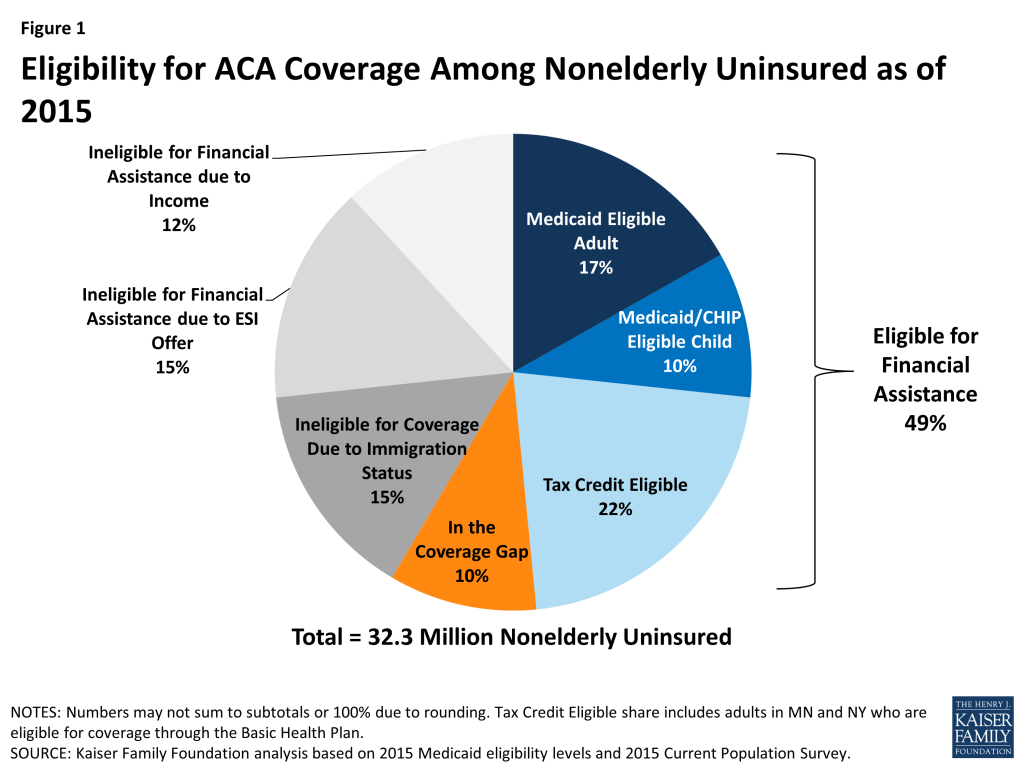-
Tips for becoming a good boxer - November 6, 2020
-
7 expert tips for making your hens night a memorable one - November 6, 2020
-
5 reasons to host your Christmas party on a cruise boat - November 6, 2020
-
What to do when you’re charged with a crime - November 6, 2020
-
Should you get one or multiple dogs? Here’s all you need to know - November 3, 2020
-
A Guide: How to Build Your Very Own Magic Mirror - February 14, 2019
-
Our Top Inspirational Baseball Stars - November 24, 2018
-
Five Tech Tools That Will Help You Turn Your Blog into a Business - November 24, 2018
-
How to Indulge on Vacation without Expanding Your Waist - November 9, 2018
-
5 Strategies for Businesses to Appeal to Today’s Increasingly Mobile-Crazed Customers - November 9, 2018
15M uninsured individuals eligible for Medicaid or subsidized coverage
An estimated 38 percent of uninsured Washington residents are eligible for Medicaid and another 19 percent are eligible for tax credits, according to the report.
Advertisement
In less than three weeks, the Obama administration will embark on the third enrollment period under the 2010 Affordable Care Act, where it faces the ongoing challenge of persuading those who have resisted obtaining health coverage to buy it. About 32 million people, or about 11 percent of the USA population, are still uninsured.
Many qualify for subsidized plans under the Affordable Care Act but haven’t signed up, says the report released Tuesday by the Kaiser Family Foundation.
“What’s needed to reach the remaining uninsured is intensive outreach and education and in many cases one-on-one assistance to help people understand the options available to them”, says study co-author Larry Levitt, a Kaiser Family Foundation senior vice president.
And because eligiblity for Medicaid and subsidies depends on a person’s income, a few states have many more eligible residents than others.
Currently, Florida restricts Medicaid eligibility to certain categories of low-income people, including children, pregnant women, and parents with dependent children whose household incomes are below 30 percent of the federal poverty level, or about $6,027 for a family of three.
For 2016 coverage, open enrollment in the Obamacare marketplaces begins November 1 and ends January 31.
The balance of the uninsured generally earn too much income to qualify either for Medicaid or for the tax credits to buy subsidized coverage on the health exchanges. But with barriers such as immigration status or lack of Medicaid expansion in their state, a few of these 15.7 million people will not be able to enroll.
The remainder – 47 percent – are either illegal immigrants not qualified to have insurance under the program, have not signed up for insurance available through employers, or make too much money to receive subsidies.
Of the 20 states that have not expanded Medicaid, those with the largest numbers in the coverage gap are: Texas, with 766,000; Florida, with 567,000; Georgia, with 305,000; North Carolina, with 244,000; and Louisiana, with 192,000. In states that expanded Medicaid, 40% of the nonelderly uninsured population is eligible for Medicaid, versus just 13% in states that have not expanded Medicaid (Figure 2).
One in ten uninsured people (3.1 million) fall into the coverage gap due to their state’s decision not to expand Medicaid, and 15% of the uninsured (4.9 million) are undocumented immigrants who are ineligible for ACA coverage under federal law. In states that have expanded eligibility, KFF estimates that 1.4 million Californians have not claimed Medicaid benefits, as well as 548,000 in New York, 477,000 in Pennsylvania, and 404,000 in Ohio. Almost half – 15.7 million – would qualify for financial help to get coverage through the Marketplace or Medicaid.
Advertisement
Uninsured people whose incomes are low enough to qualify for assistance aren’t spread equally throughout the country. About one in five could get premium tax credits for the Marketplace.





























